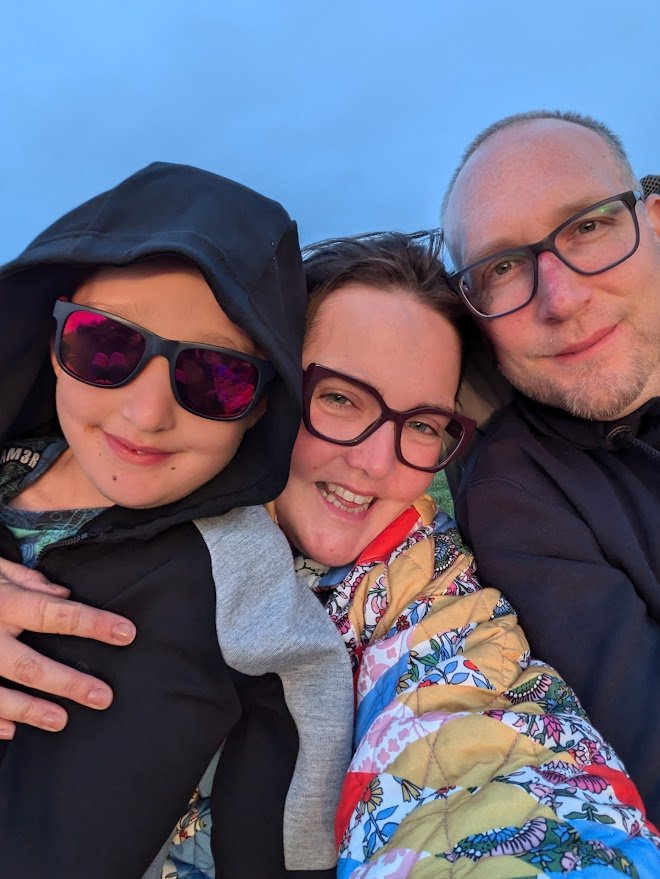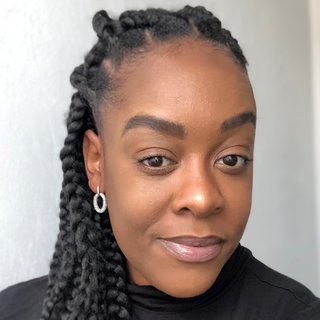What I've learned after two stem cell transplants
Elena has had two stem cell transplants as part of her treatment for plasma cell leukaemia. Here she shares her advice, based on the things that helped her.

I was diagnosed with plasma cell leukaemia, a rare and aggressive type of blood cancer, in spring 2019. I was a mum of a two-year old and working as a nurse in intensive care. Working night shifts while raising a toddler was enough to leave me exhausted. But I started to notice I was feeling much more tired than usual and feeling breathless.
I also began getting bruises and pain in different parts of my body. I put it all down to handling patients and lifting my son, but gradually I realised that something wasn’t right. I went to my GP and had my bloods taken.
Later that same day the GP called and said “I’m sorry to do this over the phone but your blood tests are really abnormal, and the hospital is waiting for you. We think it might be some kind of blood cancer.”
Very early on after my diagnosis, my doctor said I would need a stem cell transplant as part of my treatment plan.
In fact, the plan was to have two transplants: an autologous transplant using my own cells, followed a few months later by an allogeneic transplant, using donor cells.
At the time, I didn’t really have a clue what the transplants would entail, but I trusted my medical team to guide me through the process. Now, after two transplants, I want to share my experience to help anyone who might be facing a similar situation. Here’s what I wish I had known—and some advice that might help you.
Take things one step at a time
There’s a lot to take in, so it’s important to take things one step at a time to avoid getting overwhelmed. Early on, I didn’t want to know every detail about the transplants. My focus was just on the initial chemotherapy and getting through that.
My hospital were good at giving me all the information I needed but at the appropriate times, so I wasn’t getting too much information at once.
Palliative care is not something to be scared of
The palliative care team helped me with my pain and other symptoms like mucositis. When most people think of palliative care they think of people dying, but it’s important to dispel that myth. Supporting people who are dying is just one aspect of palliative care – it’s also there to manage symptoms and provide support for anyone with serious illness. So don’t be scared if you hear the words palliative care during your treatment.
Ask for help, and accept it
My mother-in-law came once a week to help out and she’d pick my son up from nursery. She even insisted on hiring a cleaner for us. That was amazing!
Whether it’s family, friends, or professionals, don’t be afraid to let people take some of the burden off you. I’d also recommend asking for help to claim any benefits you’re entitled to. Navigating the world of benefits and filling out forms can be really tiring when you’re going through treatment, but there is support available to help.
Protect yourself from infections
One of the biggest risks after a transplant is infection. After my allogeneic transplant, I caught astrovirus from my son, a childhood tummy bug that he recovered from in 24 hours. For me, it lasted 40 days, causing severe diarrhoea and a lot of weight loss.
Another time, my husband and son both had covid, and we had to live in separate parts of the house for 10 days. It was difficult, but it worked – I didn’t get sick.
Make sure your friends and family understand how serious it can be if you get an infection, and that they need to stay away if they’re ill.
I found that some people take this less seriously than others and throw caution to the wind, so at times I had to be assertive. It’s not fun, but at the end of the day you have to protect yourself.

Elena and her family
Listen to your body
In hospital, just do what you feel able to each day, and don’t feel pressure to do anything else. If all you can manage is brushing your teeth each day, and having a wash every other day, then that’s okay.
It’s also okay to say no to visitors if you don’t have the energy. I only really had my husband and mother-in-law coming in, as having lots of visitors was too exhausting.
After the transplants, I was mentally ready to do things (I’m not the sort of person who likes sitting around doing nothing), but physically, I just couldn’t. So go easy on yourself. If you’re tired, take a nap. If you don’t have the energy to do something, let it go.
There’s no shame in using mobility aids
I’ve used a wheelchair and a walker when I’ve needed them, even though it was tough to accept at first. I thought I shouldn’t have to be using a walker in my 30s, but there were times I would have been absolutely exhausted without it. So my advice would be accept that you might need to use mobility aids. It’s not going to be forever.
Find something to look forward to
Mentally, it helps to have something to look forward to. For me, it was our camper van. While I was going through treatment, my husband and I would dream about the trips we’d take once I was better.
Even if you’re not able to plan big things, focus on small things to look forward to—whether it’s a visit with friends or a day out.

Elena's campervan
It’s okay to struggle
After my transplants, both my husband and I went to counselling. He struggled more than I realised, and in many ways, it was harder on him than it was on me. It’s okay to admit you’re not okay and to seek support when you need it.
If you’re going through a transplant, know that it’s a tough journey, but it’s also one that you can get through. Lean on the support available, protect your health, and take things one day at a time. You’ll get there.


